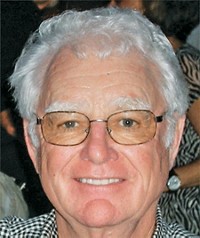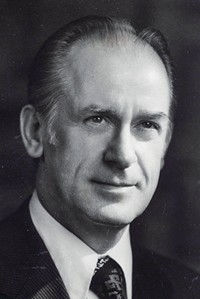Advertisement
Grab your lab coat. Let's get started
Welcome!
Welcome!
Create an account below to get 6 C&EN articles per month, receive newsletters and more - all free.
It seems this is your first time logging in online. Please enter the following information to continue.
As an ACS member you automatically get access to this site. All we need is few more details to create your reading experience.
Not you? Sign in with a different account.
Not you? Sign in with a different account.
ERROR 1
ERROR 1
ERROR 2
ERROR 2
ERROR 2
ERROR 2
ERROR 2
Password and Confirm password must match.
If you have an ACS member number, please enter it here so we can link this account to your membership. (optional)
ERROR 2
ACS values your privacy. By submitting your information, you are gaining access to C&EN and subscribing to our weekly newsletter. We use the information you provide to make your reading experience better, and we will never sell your data to third party members.
Synthesis
J. Paul Hogan
by Sophie L. Rovner
July 15, 2013
| A version of this story appeared in
Volume 91, Issue 28
J. Paul Hogan, 92, codiscoverer of crystalline polypropylene and high-density polyethylene (HDPE), died in Wichita, Kan., on Feb. 19, 2012, from complications of Alzheimer’s disease.
Born in Lowes, Ky., Hogan received a B.S. in chemistry and physics from Murray State Teachers College (now Murray State University), in Kentucky, in 1942. After serving as a physics instructor at an Army preflight school at Oklahoma A&M (now Oklahoma State University, Stillwater) during World War II, Hogan joined Phillips Petroleum in Bartlesville, Okla., as a research chemist in 1944. There, he began his famous collaboration with Robert L. Banks, which led to their discovery in 1951 of polypropylene and HDPE, both produced using chromium catalysts. Billions of pounds of these plastics are now used every year in milk jugs, fibers, pipes, auto parts, and other applications.
Hogan, who continued to develop chromium catalysts, retired from Phillips as a senior research associate in 1985. He was an independent consultant until 1993.
The Society of Chemical Industry honored Banks, who died in 1989, and Hogan with the Perkin Medal in 1987. In 1998, ACS named them Heroes of Chemistry. ACS designated the discovery of polypropylene and the HDPE process as a National Historic Chemical Landmark the following year. Hogan held more than 50 patents.
He served as a Boy Scout leader and a deacon at the First Baptist Church in Bartlesville. He enjoyed fishing, hunting, chess, gardening, and woodworking.
Hogan is survived by his daughters, Fay Sweney and Susan Lair; four grandchildren; and one great-grandchild. He was predeceased by his wife, Glenda, and son, Kenneth.
Obituary notices of no more than 300 words may be sent to Susan J. Ainsworth at s_ainsworth@acs.org and should include an educational and professional history.




Join the conversation
Contact the reporter
Submit a Letter to the Editor for publication
Engage with us on Twitter